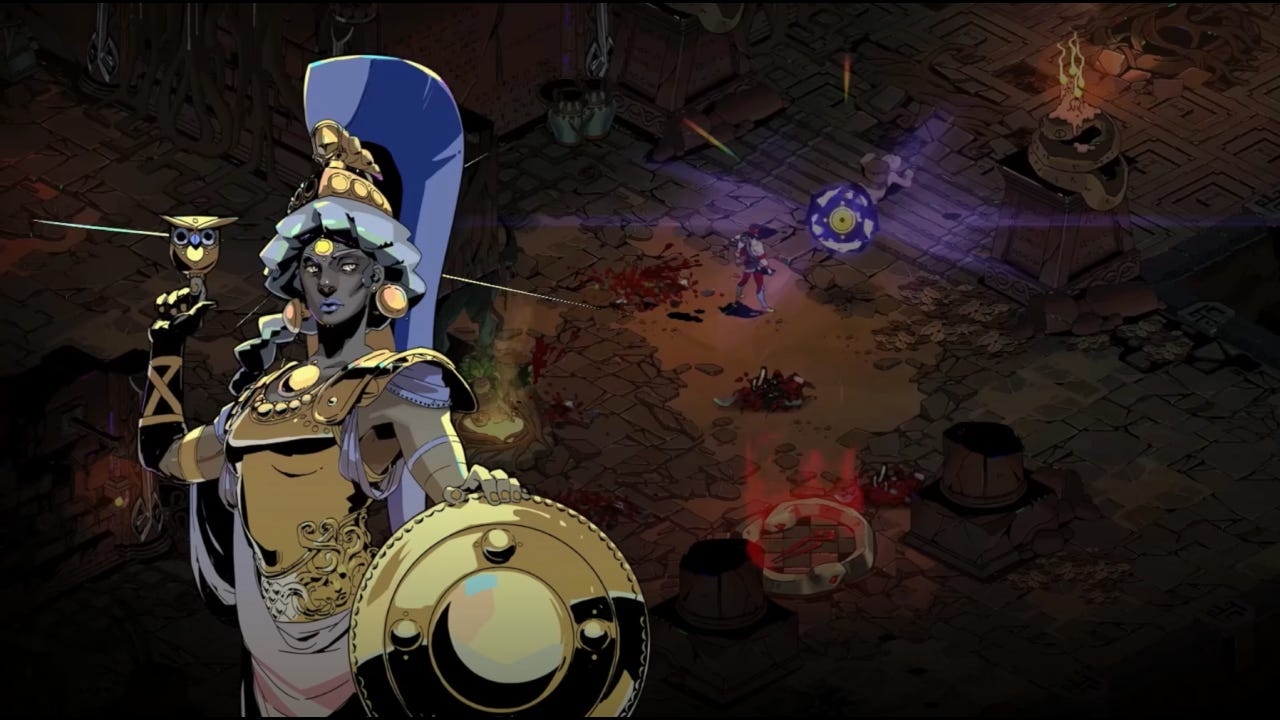Dream-casting and finding character with your own voice - Unlocking the Vault #2Dream-casting and finding character with your own voice - Unlocking the Vault #2
Solid advice on bringing characters all the way to life with writer and voice actor Cyrus Nemati.

In Unlocking the Vault, Game Developer editor-in-chief Danielle Riendeau dives into the rich archives of the GDC Vault in order to uncover timeless game development advice, anecdotes, and hard-learned lessons tucked away within the hundreds of talks from decades of GDC shows preserved within the Vault. Every other week, this curated overview will feature key takeaways from a vintage or classic GDC Talk with the goal of helping today's developers unearth new lessons from the past.
In week ten (of a twelve week quarter) in my Game Design Principles class at Berklee, we focus on writing characters for games. My students craft game design documents for a blue-sky project of their own design, and for most folks, there is some element of character creation (except for those opting for the most abstract puzzle or strategy games, and they have heavier assignments in other areas!)
In preparing for the week ten lecture, I often like to take inspiration from the fine minds at GDC, especially for narrative design and strong, iconic character writing. One talk that I've enjoyed re-discovering recently (and showing to my students) is this GDC 2021 banger Finding Character Voice With Your Voice. In it, Wooga Senior Writer and voice actor Cyrus Nemati gives a short-but-action-packed talk on using elements of performance to really make characters pop off the page, even at early stages of writing.
Cast your characters (in your dreams)
After warning writers off of the temptation to just write oodles of lore, Nemati showcases a Mike Bithell (of Bithell Games) gem on writing for games. In a 2019 tweet, Bithell notes "My writing gets 10x better once I've settled my dream casting for the character I'm working on."
"Mentally assembling a cast of actors who could play your characters is already providing characterization," says Nemati. "Imagine you are struggling with a character on making their dialogue sound consistent and iconic, and you realize 'huh, you know, Sylvester Stallone kinda sounds like this, and the dialogue starts to flow naturally,'" he drops into a Stallone-drawl as he makes the last point. "At least, as naturally as Sylvester Stallone's dialogue does, because you know what he sounds like."
The most animated table reads are the best (and most fun)
After presenting a few case studies on characters and performance, Nemati stresses the importance of having some fun in the writer's room. "Most of us can recognize when writing is uninspired, or when it's done just to fulfill some sort of narrative checkbox. If your studio acts as though writing is just the thing one must do to push the player along, it is up to you to bring that enthusiasm for writing, and the best way to do that is really to have fun with it!"
He calls up a clip of a table read with his team, where the writers get very animated in their read of a parrot character holding the keys to a mystery. There are voices (oh boy, are there ever!) and a lot of laughter, and Nemati himself, giving the talk and watching the clip, is overjoyed by the goofy energy.
"This is just us having a good time," he begins, happily. "But that good time helps us bond as a team, which is certainly a good thing to have in your writer's room. The comfort that comes with a strong bond allows you to explore and find a character's unique voice, and voice makes your characters unique."
"My holy grail for written dialogue is for the reader to know exactly who is speaking, without a name tag."
After a brief segue revolving around Kreia's memorable performance from Star Wars: Knights of the Old Republic, Nemati goes back to the fundamental topic of the talk: "Use your voice!"
"There's absolutely no reason not to do this in your writer's room," he says, encouraging writers to perform, have fun, and truly get into it. "Even if you're the only writer on your team, perform your dialogue... just get those voices out there, they will help you." Nemati offers a few pathways to hiring voice actors for this early stage as well, if your project is of a scope that supports that.
Unlocking the key takeaways
In case you want the sparknotes version of the talk—or you're just outlining some of the major lessons in your notes—don't worry, I've got you!
The key takeaways here are Lesson #1: Don't rely on oodles of lore to write memorable characters, think of who you'd like to play that character (call it dream-casting) and Lesson #2: Perform that dialogue, whether by yourself, for your writer's room, or by hiring a voice actor. You'll find layers and depth no matter what direction you go in here.
Read more about:
Top StoriesAbout the Author
You May Also Like




